| Author |
Message |
|
Cornelis Tromp
Location: Holland Joined: 03 Jan 2010
Posts: 87
|
 Posted: Wed 29 Sep, 2010 12:09 am Post subject: viking sword?!?! or later what type of cross? Posted: Wed 29 Sep, 2010 12:09 am Post subject: viking sword?!?! or later what type of cross? |
 |
|
Hi All interested,
herewith a sword with questions,Finding place is Norffolk in the UK.
organic material of the of the scabbard , wood and leather, hairy side inside (both hard as stone) remain adhered at the tang and the blade. edges run parallel to the point. spatulatepoint had reduced during cleaning.
can any body place/date this sword or know a similar?
the type of pommel is also not known to me
what kind of cross has been used on this type ?
ttl length 90cm ,blade 77, tang 10cm, pommel 60mmx37mm , blade width 53mm.
looking forward to the comments.
thanks+regards
 Attachment: 215.27 KB Attachment: 215.27 KB
[ Download ]
 Attachment: 208.29 KB Attachment: 208.29 KB
[ Download ]
 Attachment: 208.47 KB Attachment: 208.47 KB
[ Download ]
 Attachment: 204.5 KB Attachment: 204.5 KB
[ Download ]
 Attachment: 220.13 KB Attachment: 220.13 KB
[ Download ]
|
|
  |
 |
|
Cornelis Tromp
Location: Holland Joined: 03 Jan 2010
Posts: 87
|
 Posted: Wed 29 Sep, 2010 12:23 am Post subject: Posted: Wed 29 Sep, 2010 12:23 am Post subject: |
 |
|
pommel has the shape of a cross when seen in the plan of the blade.
 Attachment: 33.68 KB Attachment: 33.68 KB

 Attachment: 170.69 KB Attachment: 170.69 KB
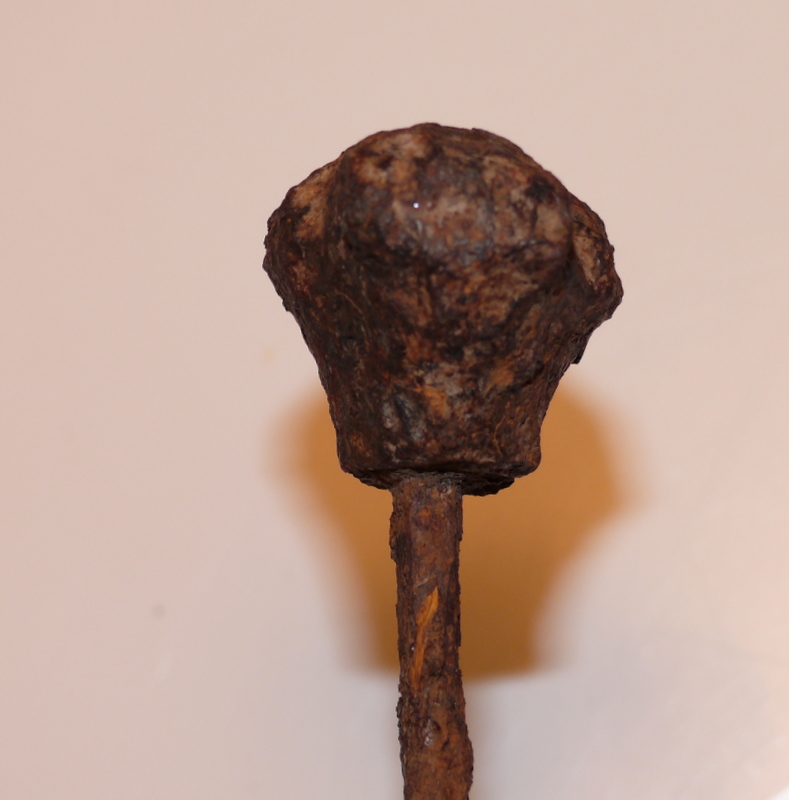
 Attachment: 178.93 KB Attachment: 178.93 KB
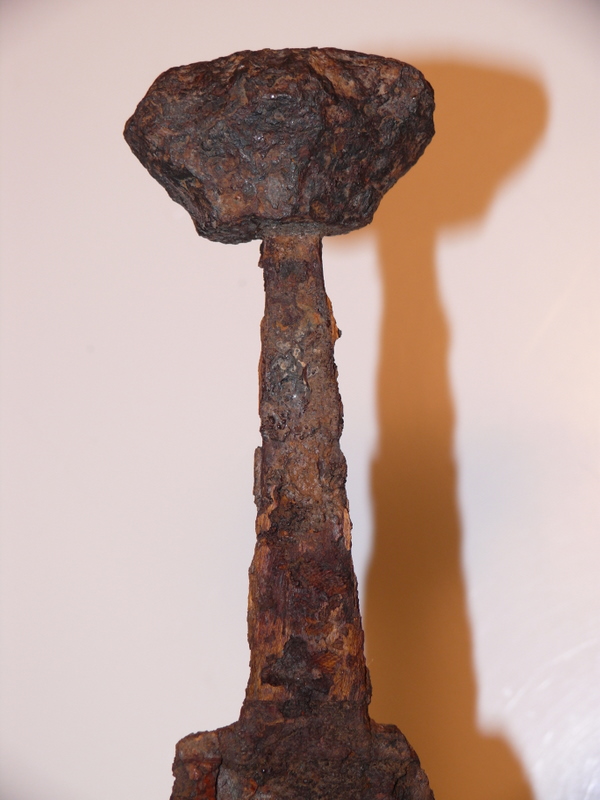
 Attachment: 143.32 KB Attachment: 143.32 KB
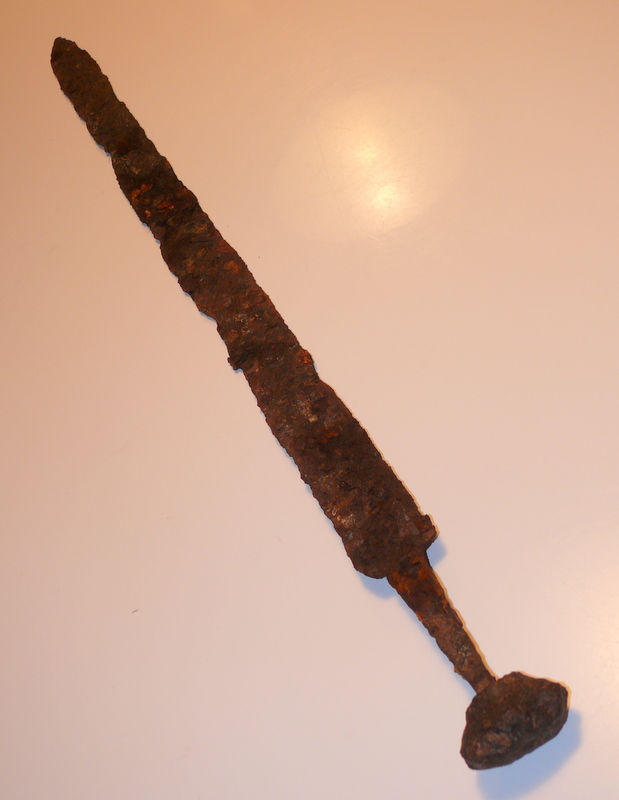
 Attachment: 147.83 KB Attachment: 147.83 KB

|
|
  |
 |
Artis Aboltins

|
 Posted: Wed 29 Sep, 2010 12:35 am Post subject: Posted: Wed 29 Sep, 2010 12:35 am Post subject: |
 |
|
|
I am fairly certain that pommel is not of characteristic type for a viking period sword.
|
|
  |
 |
Craig Peters

|
 Posted: Wed 29 Sep, 2010 12:59 am Post subject: Posted: Wed 29 Sep, 2010 12:59 am Post subject: |
 |
|
The pommel looks a bit like an unusual variation of a scent stopper pommel (Type T here if you've never heard the the term before: http://www.myArmoury.com/feature_oakeshott3.html) but to my knowledge, it is unique. This type of cross is known as the Cross Pattee. In the Middle Ages, it was sometimes associated with the Crusading orders, such as the Teutonic knights and perhaps the Knights Templar, though neither group used it consistently. The blade length is more consistent with weapons between the 8th to 10th centuries than later on, and it looks to be, as best as I can tell, an Oakshott Type X, and perhaps a Geibig Type 2, 3, or 4.
It's a very unusual sword, to say the least. Too bad the guard is missing; that might help a little bit in dating it.
|
|
  |
 |
|
Peter Johnsson
Industry Professional
|
 Posted: Wed 29 Sep, 2010 1:03 am Post subject: Posted: Wed 29 Sep, 2010 1:03 am Post subject: |
 |
|
Very interesting!
I have never seen anything like it.
from the shape of the pommel, I would not think it is from the viking period. If it is earlier, it may be quite a bit earlier. Possible roman times. It would still be very unique and quite unlike anything else I´ve seen. There are a few rather odd swords from the late roman times, and that is why I dare suggest a slim possibility that another sword like this maybe, possibly, perhaps could have been made in late roman times.
The fleece or hide lined scabbard hints at an early dating. I am not aware about this being used in high or late medieval times. Otherwise I would have perhaps guessed at a late medieval dating.
These are just speculations, me thinking aloud. A very interesting find. I wonder if the blade might be pattern welded?
Now this sword is lodged in my mind like a small stone in my shoe.
Thank you for posting. I hope some one has seen something similar, or am able to provide some clue.
|
|
   |
 |
Elling Polden

|
 Posted: Wed 29 Sep, 2010 4:54 am Post subject: Posted: Wed 29 Sep, 2010 4:54 am Post subject: |
 |
|
Could be some kind of Katzbalger, with the handguard missing? They sometimes had pommels roughly that shape...
"this [fight] looks curious, almost like a game. See, they are looking around them before they fall, to find a dry spot to fall on, or they are falling on their shields. Can you see blood on their cloths and weapons? No. This must be trickery."
-Reidar Sendeman, from King Sverre's Saga, 1201
|
|
    |
 |
|
Cornelis Tromp
Location: Holland Joined: 03 Jan 2010
Posts: 87
|
 Posted: Wed 29 Sep, 2010 6:22 am Post subject: Posted: Wed 29 Sep, 2010 6:22 am Post subject: |
 |
|
Hi Craig,
thanks for your reply.
the pommel outline looks like a Type T but a flat scent stopper in combination with a Oakeshot typeX/group 1 blade is rather unusual. Scent stoppers are mainly combined with stabbing blades Type xvI on-wards.
Hi Peter,
thank you for your reply , I am also confused and can not place this sword at all.
my first impression was that the pommel can be some kind of transition between a Wheeler type II and a Basil nut.
as there is no clearly defined fuller I presume that the blade is or is before the oakeshot type X. the sword looks very aesthetic with a short bar as a cross, (I tried with a piece of black carton.)
It looks that there is some pattern welding but very difficult to see because there is organic material adherent to the blade
Hi Elling,
I don't think it is a Katzbalger because the shoulder of the blade was fitted into the cross, you can see the trace
at the blade. Most (all) of the katzbalgers the blade shoulder rests on the guard.
however I received an opinion that it could be a 16th shortsword, however I think the chance it, is is very small.
looking forward to any suggestion.
|
|
  |
 |
|
Owen Fentimen
|
 Posted: Wed 29 Sep, 2010 8:08 am Post subject: Posted: Wed 29 Sep, 2010 8:08 am Post subject: |
 |
|
Hi !
Very interesting thread!
Is there any trace of a fuller of some kind?
The pommel is a one-off I think - difficult to place within any typology. The "croix pattée" symbol must be significant. Crosses were used as symbols before Christianity spread through Europe, but as far as I know the "croix pattée" is an exclusively Catholic symbol appearing around the XI th century...
The help of a cross-expert is needed !
However, maybe this is a medieval pommel fitted to an older blade? This one's going to be a guaranteed brain-teaser !
Cheers !
O.Fentimen
|
|
  |
 |
Luka Borscak

|
 Posted: Wed 29 Sep, 2010 2:46 pm Post subject: Posted: Wed 29 Sep, 2010 2:46 pm Post subject: |
 |
|
|
I think the pommel wasn't made with an intention for it to look like cross pattee from above. It does look a bit like it but I don't think that the smith thought of that shape as of cross pattee shape. Btw, it would be interesting to see the x-ray of the blade for the construction.
|
|
  |
 |
|
Markus A
Location: Germany Joined: 03 Feb 2010
Posts: 61
|
 Posted: Thu 30 Sep, 2010 1:24 pm Post subject: Posted: Thu 30 Sep, 2010 1:24 pm Post subject: |
 |
|
thats an italian variant of the katzbalger around 1530.the pommel is typic.look at the book
GRIFFWAFFEN IM SCHWEIZER LANDESMUSEUM BAND 1and you will find severall dozends of it.it had an single knucklebow and eightshaped crossguard.
its never anything else.
|
|
  |
 |
R D Moore

|
 Posted: Thu 30 Sep, 2010 5:17 pm Post subject: Posted: Thu 30 Sep, 2010 5:17 pm Post subject: |
 |
|
But if we look at the photo in this thread http://www.myArmoury.com/talk/viewtopic.php?t=20948 , even though the picture doesn't show it clearly, I think the pommel on the sword to the left has a very similar shape. Maybe it's Moravian from the early middle ages?
"No man is entitled to the blessings of freedom unless he be vigilant in its preservation" ...Gen. Douglas Macarthur
|
|
   |
 |
Paul Hansen

|
 Posted: Mon 04 Oct, 2010 12:11 pm Post subject: Posted: Mon 04 Oct, 2010 12:11 pm Post subject: |
 |
|
| Peter Johnsson wrote: | | from the shape of the pommel, I would not think it is from the viking period. If it is earlier, it may be quite a bit earlier. Possible roman times. It would still be very unique and quite unlike anything else I´ve seen. There are a few rather odd swords from the late roman times, and that is why I dare suggest a slim possibility that another sword like this maybe, possibly, perhaps could have been made in late roman times. |
Hi Peter, sorry for hijacking the thread, but I'm really interesting in learning more about Roman swords with solid iron pommels. I was under the impression that Roman swords generally had organic hilts, if anything, decorated with metal. I don't think I've ever seen a solid iron pommel before the Carolingian age.
Back to topic, the sword also makes me think "Katzbalger" but then the issue with the blade being fitted inside the guard is indeed a bit strange, as you say. I'm not an expert on Katzbalgers, so I'm not really qualified to comment on this anyway.
The Cross Pattee, if this is indeed the shape intended by the maker (which I doubt), was already popular in Byzantium from the 6th C. or so. The one attached is supposedly from c. 600AD. But in general religious symbols are limited to decoration rather than determining the shape of pommels...
 Attachment: 110.82 KB Attachment: 110.82 KB
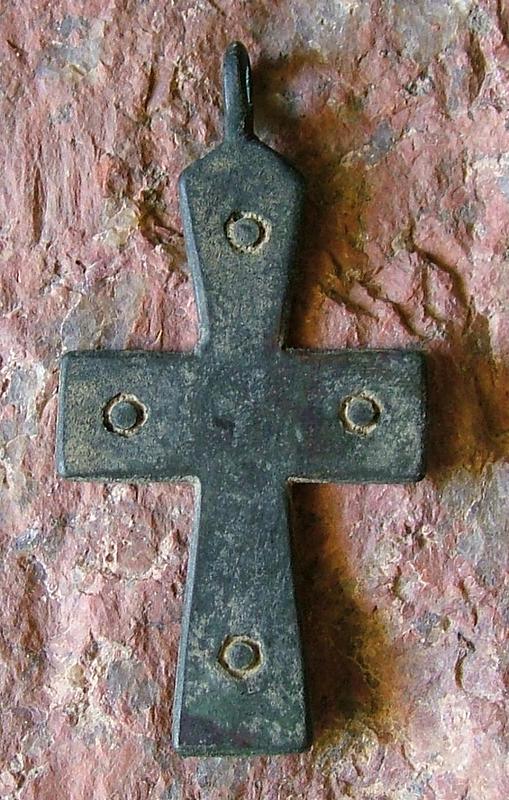
|
|
  |
 |
Craig Peters

|
 Posted: Mon 04 Oct, 2010 10:16 pm Post subject: Posted: Mon 04 Oct, 2010 10:16 pm Post subject: |
 |
|
| R D Moore wrote: | | But if we look at the photo in this thread http://www.myArmoury.com/talk/viewtopic.php?t=20948 , even though the picture doesn't show it clearly, I think the pommel on the sword to the left has a very similar shape. Maybe it's Moravian from the early middle ages? |
I don't see it. The closest sword looks like it has some form of Brazil nut pommel, the next closest also like a Brazil nut, or perhaps a tea-cosy, and the far one looks like has some form of Viking pommel, or perhaps a variation on the Brazil nut shape. None of them appear to have the somewhat scent-stopperish shape of the pommel shown here.
|
|
  |
 |
Scott Hrouda

|
 Posted: Mon 04 Oct, 2010 10:33 pm Post subject: Posted: Mon 04 Oct, 2010 10:33 pm Post subject: |
 |
|
Cornelis, please correct me if I'm seeing or interpreting this photograph improperly.
 Attachment: 33.68 KB Attachment: 33.68 KB
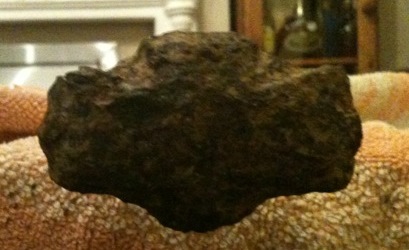
Original Photograph
 Attachment: 19.72 KB Attachment: 19.72 KB
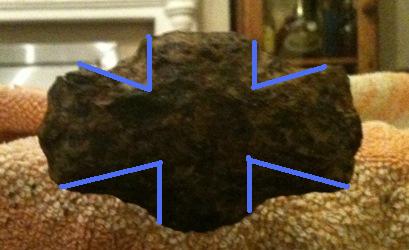
With lines drawn in
...and that, my liege, is how we know the Earth to be banana shaped. - Sir Bedevere
|
|
  |
 |
|
Peter Johnsson
Industry Professional
|
 Posted: Mon 04 Oct, 2010 11:02 pm Post subject: Posted: Mon 04 Oct, 2010 11:02 pm Post subject: |
 |
|
Hi Paul,
No you are right of course. Solid iron pommels on Roman swords are out of the norm. The reason I even bring p roman (or late roman) sword is that once in a while you see late spathae swords that are pretty original in style and method of making.
I saw a very original roman sword on a site somewhere (forgot where: sorry) that is unusual. It is a type of sword that normally has a solid ring shaped pommel of iron. This sword was said to be a medieval sword on the site (if I remember correctly; it was not identified as a roman sword any way). I feel pretty certain it is a roman sword from the late second century with a very unusual pommel.
Not a good basis for an argument that the sword in this thread is roman, I know. I just felt that the sword was so unusual it may have been an odd one in its time.
 Attachment: 20.41 KB Attachment: 20.41 KB

 Attachment: 81.3 KB Attachment: 81.3 KB

|
|
   |
 |
|
Stephen Curtin
|
 Posted: Tue 05 Oct, 2010 2:12 am Post subject: Posted: Tue 05 Oct, 2010 2:12 am Post subject: |
 |
|
Hey Peter thanks for posting a pic of that interesting sword. I've never seen a pommel like that on a roman sword before, and at first it looks really strange but when looking at the sword as a whole it is quite a beautiful piece, especially that blade. Again thanks for sharing Peter.
Éirinn go Brách
|
|
   |
 |
R D Moore

|
 Posted: Tue 05 Oct, 2010 5:40 pm Post subject: Posted: Tue 05 Oct, 2010 5:40 pm Post subject: |
 |
|
| Craig Peters wrote: | | I don't see it. The closest sword looks like it has some form of Brazil nut pommel, the next closest also like a Brazil nut, or perhaps a tea-cosy, and the far one looks like has some form of Viking pommel, or perhaps a variation on the Brazil nut shape. None of them appear to have the somewhat scent-stopperish shape of the pommel shown here. |
The pommel on the sword to the left appears to me to have two raised "blocks" in the vertical plane, shorter than those in the horizontal plane, something like a Chevy emblem.
 Attachment: 43.72 KB Attachment: 43.72 KB
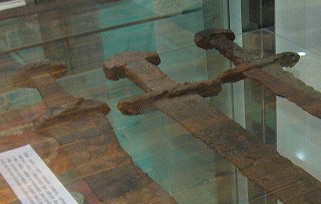
"No man is entitled to the blessings of freedom unless he be vigilant in its preservation" ...Gen. Douglas Macarthur
|
|
   |
 |
Paul Hansen

|
 Posted: Wed 06 Oct, 2010 12:42 pm Post subject: Posted: Wed 06 Oct, 2010 12:42 pm Post subject: |
 |
|
|
Interesting sword Peter! Looks like a fairly typical ring pommel sword, except for the pommel. Thanks for posting!
|
|
  |
 |
|
|

